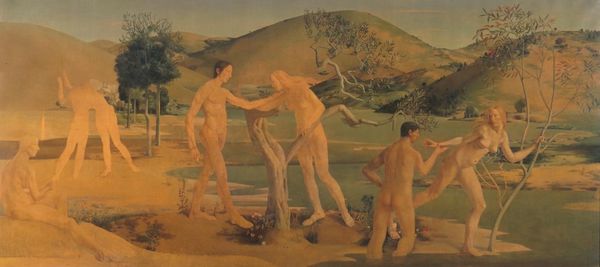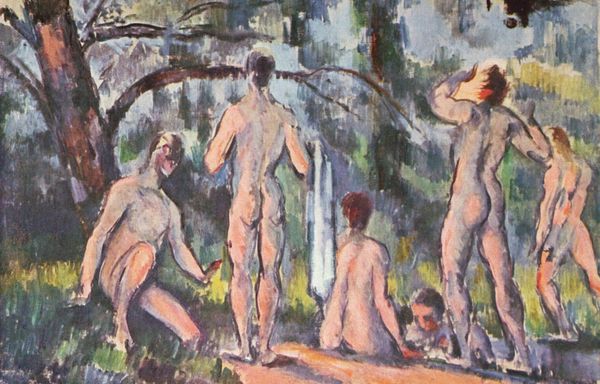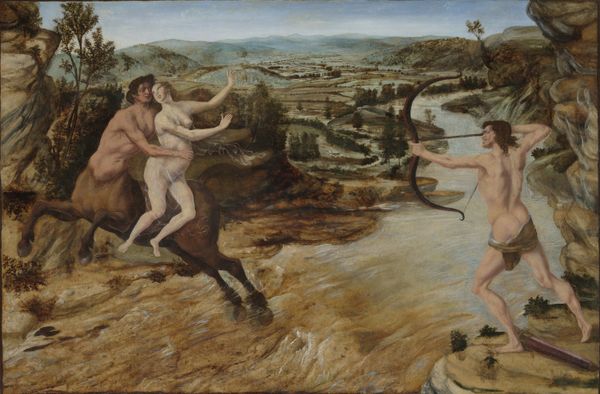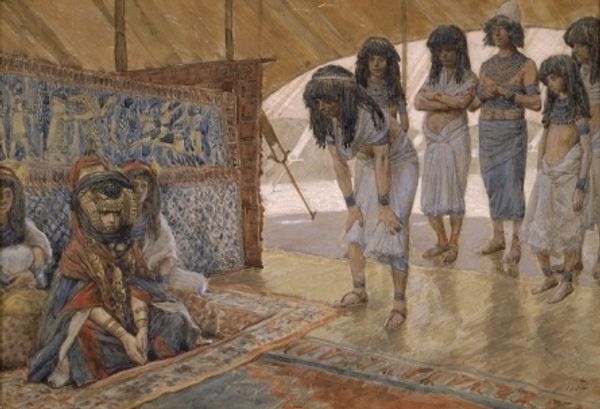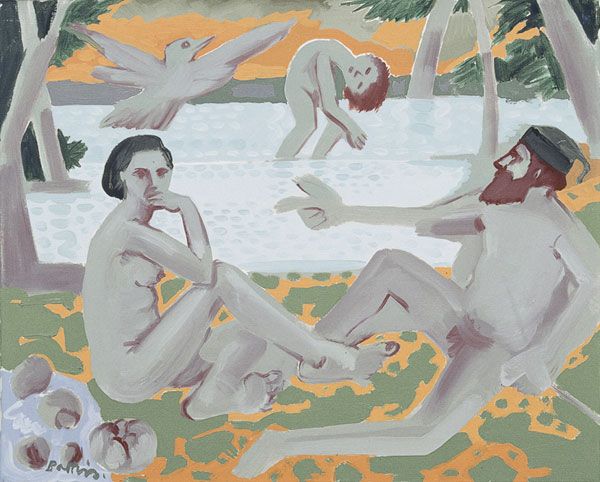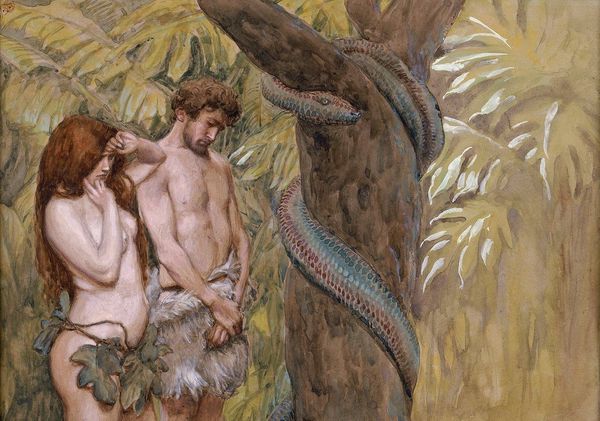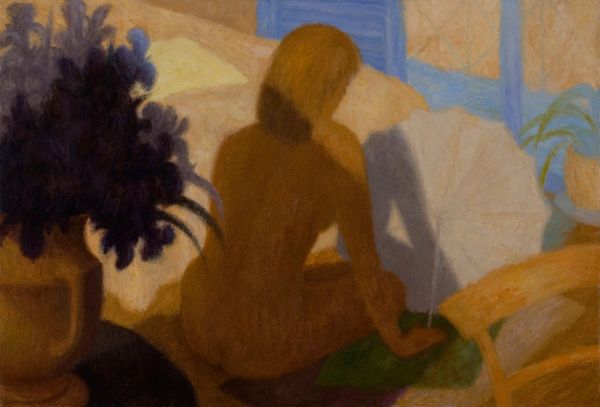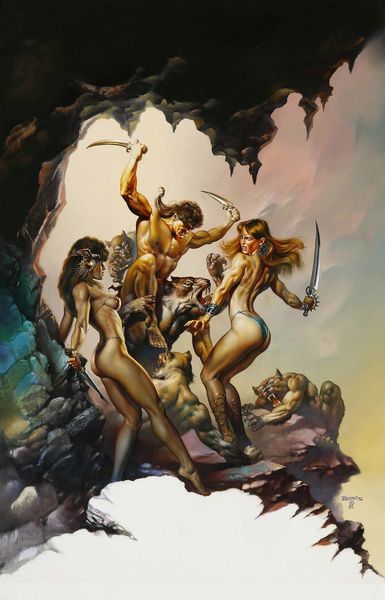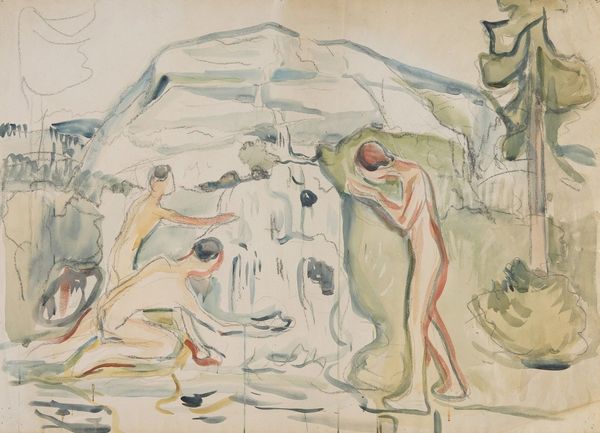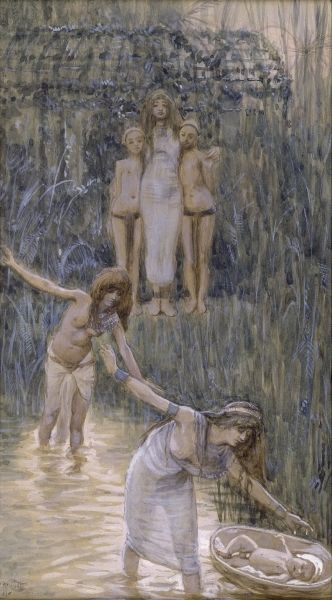
painting, oil-paint
#
narrative-art
#
painting
#
oil-paint
#
figuration
#
oil painting
#
men
#
mythology
#
history-painting
Dimensions: 28.5 x 17.3 cm
Copyright: Public domain
Curator: This painting is James Tissot’s “Moses Slays an Egyptian,” created in 1902 using oil on canvas. What strikes you upon first viewing it? Editor: There's a palpable tension. A compressed energy, almost claustrophobic. The verticality of the trees feels less about nature and more like bars holding the figures in place. It gives me chills. Curator: An intriguing initial assessment. It's important to note Tissot's source material here. This work is one of many from his illustrated series on the Old Testament. Here we have a rather literal depiction of Moses’s act of violence. How do you interpret the artist's formal choices in relation to that source text? Editor: Well, the limited palette emphasizes the violence, doesn't it? All browns and muted whites. No joy. The impasto is thick, and lends the scene a gritty texture that is very confronting. Like we're witnessing something ugly. The gaze is deliberately confronting. It draws us in like moths to a terrible flame. I wonder how Tissot himself felt about portraying this? Curator: An interesting avenue for investigation. If we return to a structural assessment of the canvas, the composition positions the viewer quite intimately with this slaying. Note also that there is a certain symmetry. Moses' arm mirrors the limp arm of the dying Egyptian. And the trunks echo this visual rhyming. Is it suggestive of inevitable justice or an unending cycle of retribution? Editor: Oh, I like that take. Justice as symmetry... a terrible beauty, isn't it? Tissot, I feel, refuses to glorify or condemn; he's presenting us with a brutal snapshot, a dilemma frozen in pigment. It invites questions, doesn't it? Morality isn't black and white...it's rendered here in earthy, bloodless browns, making us search for answers in the grim landscape of human choice. I was initially horrified but now… now I feel only deep unease. Curator: Indeed. Ultimately, Tissot delivers a compelling, if troubling, visual encounter. The compositional elements amplify, rather than dilute, the underlying emotional and ethical complexities of the scene depicted. Editor: Agreed. A discomforting painting that demands thoughtful contemplation, revealing new layers with each visit. I might need to spend some time with this one.
Comments
No comments
Be the first to comment and join the conversation on the ultimate creative platform.
